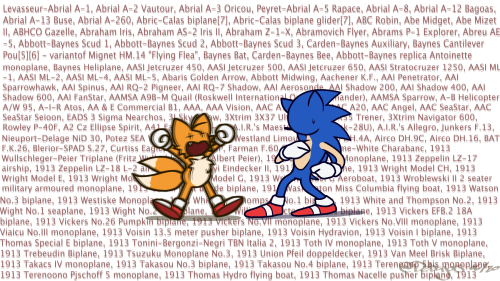Tag Later - Blog Posts

Israeli scientists see breakthrough in AIDS cure
Drug now being tested causes HIV-infected cells to self-destruct without harming the rest of the body
BY
TIMES OF ISRAEL STAFF
November 1, 2016, 3:26 am
HIV and AIDS patients may find new hope in a drug developed at Hebrew University in Jerusalem which is currently being tested at the Kaplan Medical Center in Rehovot.
The drug was inserted into test tubes containing the blood of ten AIDS patients currently being treated at the hospital, and was found to decrease the HIV virus count in the blood samples by as much as 97 percent in just eight days, Channel 2 reported Monday.
The active ingredient in the drug is a peptide, or smaller version of a protein, that was developed by Abraham Loyter and Assaf Friedler at Hebrew University. The peptide causes several copies of the virus’s DNA to enter the infected cell, instead of just one copy, causing the cell to self-destruct.
HIV is currently treated with a cocktail of drugs that slow the progression of the infection in the body but never rid the patient of the virus entirely. These drugs have allowed doctors to treat AIDS as a chronic illness as opposed to a fatal one.
Loyter explained that the new approach is superior to previous efforts.
“With our approach,” Loyter told Channel 2, “we are destroying the cells, so there is no chance that the virus will awaken one day, because there are no cells, there will be no cells that contain the virus.”
Loyter explained that “the drug enhances certain processes in the body during the spreading of the virus and that enhancement kills certain cells.”
In a separate but related development, the Health Ministry announced last week it would begin distributing prophylactic drugs for the first time to populations at higher risk of contracting HIV. The drugs, when taken regularly, have been found to be effective in preventing the spread of HIV during contact.
I'm pretty new here, and I don't actually know much about dinosaurs (just followed this blog because it seemed really cool and interesting) so could you explain what shrink-wrapped means?
Of course! See, modern animals have a lot of muscles, fat, fluff, etc, and end up looking very little like their actual skeleton. For example, look at how much fluff owls have:

(Source)
However, lots of palaeoartists completely ignore this! They basically stretch skin over the bones and call it a day. One especially bad example that was featured on @palaeofail is this poor pterosaur:

It barely has room for its digestive system. It’s definitely missing the air sac system that allows it to breathe. It’s got virtually no muscles on the arms - how does it fly?? - on the head (no wonder its mouth is open. It has no jaw muscles to close it!), on the torso (it needs to flap), or on the legs (walking) It doesn’t have any fat at all, so it’s definitely starving (maybe because it can’t fly or close its moth?). The skin is much too thin; you can see all of the bones and its wing membranes should be much, much thicker. And it’s missing the hair-like pycnofibres that should be covering its body!
Many palaeoartists have started to strike back at this by drawing modern animals like we might draw them if we found their bones:

(Source)
[House cat]


(Source)

Saturn: Oh you wanted a twist?
New theory explains how beta waves arise in the brain
Beta rhythms, or waves of brain activity with an approximately 20 Hz frequency, accompany vital fundamental behaviors such as attention, sensation and motion and are associated with some disorders such as Parkinson’s disease. Scientists have debated how the spontaneous waves emerge, and they have not yet determined whether the waves are just a byproduct of activity, or play a causal role in brain functions. Now in a new paper led by Brown University neuroscientists, they have a specific new mechanistic explanation of beta waves to consider.

The new theory, presented in the Proceedings of the National Academy of Sciences, is the product of several lines of evidence: external brainwave readings from human subjects, sophisticated computational simulations and detailed electrical recordings from two mammalian model organisms.
“A first step to understanding beta’s causal role in behavior or pathology, and how to manipulate it for optimal function, is to understand where it comes from at the cellular and circuit level,” said corresponding author Stephanie Jones, research associate professor of neuroscience at Brown University. “Our study combined several techniques to address this question and proposed a novel mechanism for spontaneous neocortical beta. This discovery suggests several possible mechanisms through which beta may impact function.”
Making waves
The team started by using external magnetoencephalography (MEG) sensors to observe beta waves in the human somatosensory cortex, which processes sense of touch, and the inferior frontal cortex, which is associated with higher cognition.
They closely analyzed the beta waves, finding they lasted at most a mere 150 milliseconds and had a characteristic wave shape, featuring a large, steep valley in the middle of the wave.
The question from there was what neural activity in the cortex could produce such waves. The team attempted to recreate the waves using a computer model of a cortical circuitry, made up of a multilayered cortical column that contained multiple cell types across different layers. Importantly, the model was designed to include a cell type called pyramidal neurons, whose activity is thought to dominate the human MEG recordings.
They found that they could closely replicate the shape of the beta waves in the model by delivering two kinds of excitatory synaptic stimulation to distinct layers in the cortical columns of cells: one that was weak and broad in duration to the lower layers, contacting spiny dendrites on the pyramidal neurons close to the cell body; and another that was stronger and briefer, lasting 50 milliseconds (i.e., one beta period), to the upper layers, contacting dendrites farther away from the cell body. The strong distal drive created the valley in the waveform that determined the beta frequency.
Meanwhile they tried to model other hypotheses about how beta waves emerge, but found those unsuccessful.
With a model of what to look for, the team then tested it by looking for a real biological correlate of it in two animal models. The team analyzed measurements in the cortex of mice and rhesus macaques and found direct confirmation that this kind of stimulation and response occurred across the cortical layers in the animal models.
“The ultimate test of the model predictions is to record the electrical signals inside the brain,” Jones said. “These recordings supported our model predictions.”
Beta in the brain
Neither the computer models nor the measurements traced the source of the excitatory synaptic stimulations that drive the pyramidal neurons to produce the beta waves, but Jones and her co-authors posit that they likely come from the thalamus, deeper in the brain. Projections from the thalamus happen to be in exactly the right places needed to deliver signals to the right positions on the dendrites of pyramidal neurons in the cortex. The thalamus is also known to send out bursts of activity that last 50 milliseconds, as predicted by their theory.
With a new biophysical theory of how the waves emerge, the researchers hope the field can now investigate whether beta rhythms affect or merely reflect behavior and disease. Jones’s team in collaboration with Professor of Neuroscience Christopher Moore at Brown is now testing predictions from the theory that beta may decrease sensory or motor information processing functions in the brain. New hypotheses are that the inputs that create beta may also stimulate inhibitory neurons in the top layers of the cortex, or that they may may saturate the activity of the pyramidal neurons, thereby reducing their ability to process information; or that the thalamic bursts that give rise to beta occupy the thalamus to the point where it doesn’t pass information along to the cortex.
Figuring this out could lead to new therapies based on manipulating beta, Jones said.
“An active and growing field of neuroscience research is trying to manipulate brain rhythms for optimal function with stimulation techniques,” she said. “We hope that our novel finding on the neural origin of beta will help guide research to manipulate beta, and possibly other rhythms, for improved function in sensorimotor pathologies.”

‘Smart fat cells’ cross blood-brain barrier to catch early brain tumors
An MRI contrast agent that can pass through the blood-brain barrier will allow doctors to detect deadly brain tumors called gliomas earlier, say Penn State College of Medicine researchers. This ability opens the door to make this fatal cancer treatable.
Gliomas are brain tumors that arise from glial cells, which help nerve cells to stay connected and send signals throughout the body.
Cancerous gliomas are uniformly fatal, with a median survival rate of 14 months from the time of diagnosis. But a new nanotechnology approach developed by Xiaoli Liu and Madhan Kumar in the Department of Neurosurgery could transform gliomas from a death sentence into a treatable condition.
Patients diagnosed with a malignant glioma can undergo surgery, chemotherapy and radiation to destroy the tumor, but the cancer will return.
“Patients typically don’t die from the tumor they initially presented with. Rather, they die from new tumors that come back in other parts of the brain,” said James Connor, Distinguished Professor of Neurosurgery.
These new gliomas tend to grow quickly and are often resistant to treatment because they spring from cancer cells that survived the first therapeutic assault. Glioma patients have follow-up MRIs to detect new brain cancers but the tests do not catch the tumors early enough to save lives.
That is because contrast agents used to outline gliomas on an MRI can only pass the protective blood-brain barrier once the tumors have grown large enough to cause damage to the barrier. Until then, the blood-brain barrier blocks 98 percent of small molecules and all large molecules from entering the brain.
To overcome this deadly limitation, Penn State researchers created “smart fat cells” called liposomes that can pass the blood-brain barrier in mice, seek out tiny cancerous gliomas like heat-seeking missiles and light them up on an MRI. The liposomes are loaded with the most commonly used contrast agent, Magnevist. On their surface, the liposomes are studded with proteins that target receptors on glioma cells.
The new contrast agent delivery system is more sensitive than traditional contrast-enhanced MRI, Connor said.
The researchers found that the liposomes entered the brain in healthy mice with uncompromised blood-brain barriers. Both the conventional and the new technique found large gliomas in mice with cancer, but only the liposome-encapsulated agent was able to detect smaller early-stage tumors. “The goal is to be able to get down to detecting single cancer cells,” Connor said.
The study was published in Journal of Neuro-Oncology.
It is not exactly known how the liposomes get past the intact blood-brain barrier, but they apparently do it without causing damage. In the study, mice showed no harm from the treatment.
This novel approach is an alternative to ultrasound, another promising method researchers are studying to get therapeutic agents into the brain. Ultrasound, however, causes temporary disruption to the blood-brain barrier, which allows not only the therapeutic agent to enter the brain, but also blood which could have medical implications.
“Ultrasound, with all of its good qualities, is disruptive to the blood-brain barrier, whereas we can get an agent to cross it without causing disruption.” Connor said.
The researchers said that in the future, smart fat cells will deliver chemotherapeutic drugs, along with contrast agents, to brain tumor patients so that cancer cells can be detected and wiped out in one step. They recently presented research on these next-generation liposomes at the Society for Neuro-Oncology meeting in San Antonio.

Acting outrageous and making a complete fool of yourself while drunk has been linked to a genetic mutation. It blocks the production of one of the body’s serotonin receptors, which can affect mood swings, impulsive behavior, and decision making. So far, the mutation has only been found in Finnish people, but the discovery is helping researchers understand more about the role serotonin plays in your body. Source Source 2
A reminder that NASA isn’t the only space agency
I have seen many “Space achievements 2015” articles and posts leaving international accomplisments completely out, so here are some of them:
1. A new type of basaltic rock on the moon was found by Chinese robotic lander.
China National Space Administration’s Chang’e-3 landed on the Moon on 14 December 2013, becoming the first spacecraft to soft-land since the Soviet Union‘s Luna 24 in 1976.

2. On February 11, the European Space Agency, ESA, successfully launched on a suborbital trajectory and recovered an experimental wingless glider, IXV.
It became the first true “lifting body” vehicle, which reached a near-orbital speed and then returned back to Earth without any help from wings.

3. On December 9, Japan’s Akatsuki spacecraft succeeded entering orbit of Venus.
Japan Aerospace eXploration Agency’s Akatsuki is the first spacecraft to explore Venus since the ESA’s Venus Express reached the end of its mission in 2014.

4. ESA’s Rosetta spacecraft detected oxygen ‘leaking’ from comet 67P/Churyumov-Gerasimenko, the first time these molecules have been seen around a comet.
Rosetta spacecraft, the first to drop a lander (named Philae) on a comet, entered orbit around 67P in 2014 and continues to orbit the body. On June 13, European Space Operations Centre in Darmstadt, Germany, received signals from the Philae lander after months of silence.

5. The Canadian Space Agency has provided NASA with a laser mapping system that will scan an asteroid that could potentially hit the Earth in about 200 years

6. The high-resolution stereo camera on ESA’s Mars Express captured this sweeping view from the planet’s south polar ice cap and across its cratered highlands and beyond.

find Sci-Universe on Tumblr, Instagram & Facebook

There’s Evidence of a New Ninth Planet. For real!
Caltech researchers have found evidence of a giant planet tracing a bizarre, highly elongated orbit in the outer solar system. The object, nicknamed Planet Nine, has a mass about 10 times that of Earth and orbits about 20 times farther from the sun on average than does Neptune, farthest planet from the Sun. In fact, it would take this new planet between 10,000 and 20,000 years to make just one full orbit around the sun.
Planetary scientists, Konstantin Batygin and Mike Brown, describe their work in the current issue of the Astronomical Journal and show how Planet Nine helps explain a number of mysterious features of the field of icy objects and debris beyond Neptune known as the Kuiper Belt.
Unlike the class of smaller objects now known as dwarf planets, Planet Nine gravitationally dominates its neighborhood of the solar system. In fact, it dominates a region larger than any of the other known planets.
Batygin and Brown predicted the planet’s existence through mathematical modeling and computer simulations but have not yet observed the object directly.
To put it briefly, Batygin and Brown inferred its presence from the peculiar clustering of six previously known objects that orbit beyond Neptune. They say there’s only a 0.007% chance that the clustering could be a coincidence. Instead, they say, a planet has shepherded the six objects into their strange elliptical orbits, tilted out of the plane of the solar system. It wasn’t the first possibility they investigated and they ran different simulations until finding that an anti-aligned orbit of the ninth planet prevents the Kuiper Belt objects from colliding with it and keeps them aligned. read more here
Diagram: The six most distant known objects in the solar system with orbits beyond Neptune (magenta) all mysteriously line up in a single direction. Also, when viewed in three dimensions, they all tilt nearly identically away from the plane of the solar system. A planet with in a distant eccentric orbit anti-aligned with the other six objects (orange) is required to maintain this configuration. The diagram was created using WorldWide Telescope. Credit: Caltech/R. Hurt (IPAC)
The 12 Cranial Nerves and Starbucks

When you walk into Starbucks and you..
I. Smell the coffee aroma (olfactory)..
II. Read the order menu from about 20 feet away (optic) then you..
III. Pupils constrict as you look at items, such as muffins, closer (oculomotor)..
IV. You look up at salesperson then down at your money as you pay (trochlear)..
V. You clench your teeth and touch your face when they called your drink (trigeminal)..
VI. You look side-to-side to see if anyone else has ordered the same drink (abdsucens)..
VII. You smile because you realize this IS your drink (facial), then..
VIII. You hear someone say “You can sit here, we are leaving” (auditory). As you sit..
IX. You taste the sweet whipped cream on the top of your drink (glossopharyngeal)..
X. You say “Ahhhh this is good!” (vagus)..
XI. You look at the person next to you because they heard you and then you shrug your shoulders (spinal accessory)..
XII. When they look away you stick your tongue at them (hypoglossal)!
I hate when people get all snobby like “uhm, humans didn’t EVOLVE from apes, humans and apes share a common ancestor”
Yeah well guess what shitlips, that common ancestor? an ape. By every taxonomical definition, it would be considered an ape.
.. I mean shit, by taxonomical definition, humans still are apes. They fall under the family Hominidae. We didn’t ditch that branch when we put pants on.

















